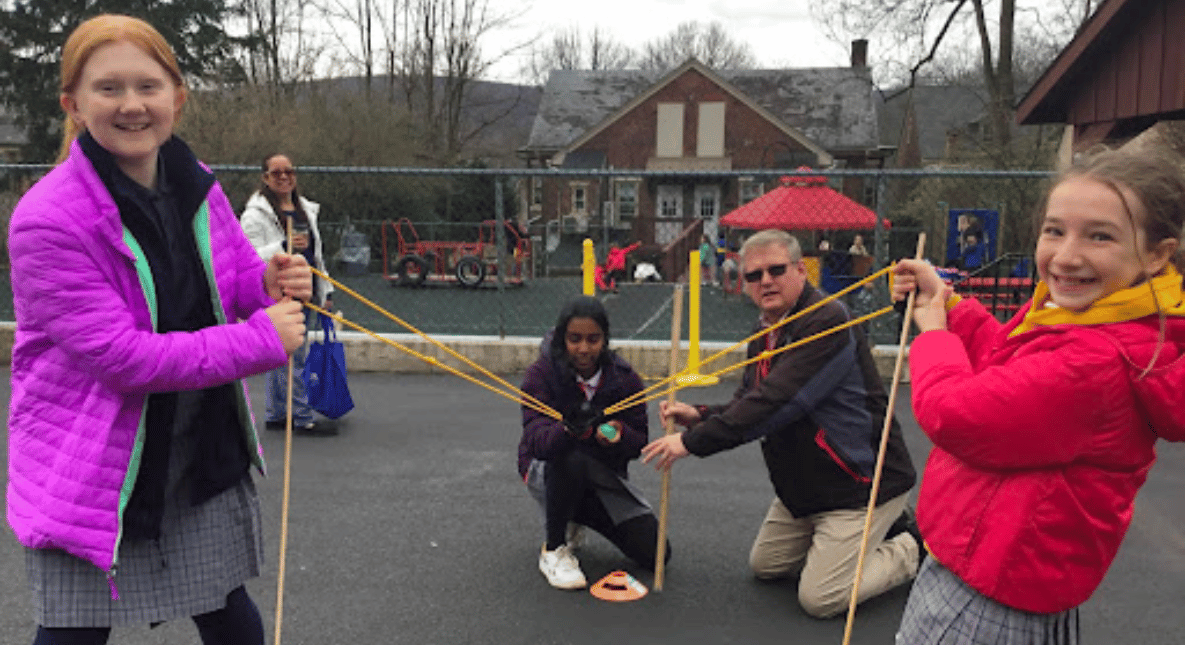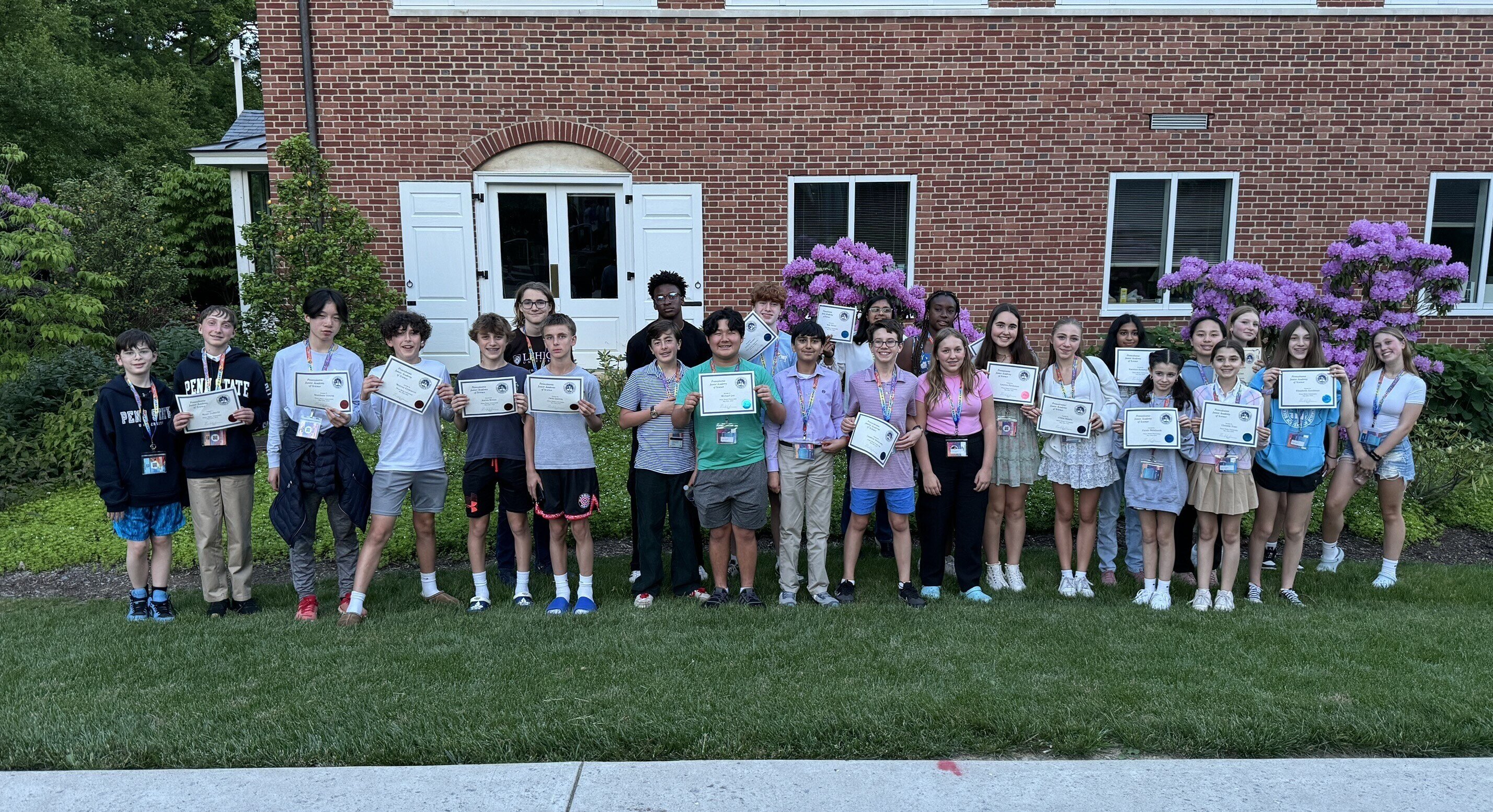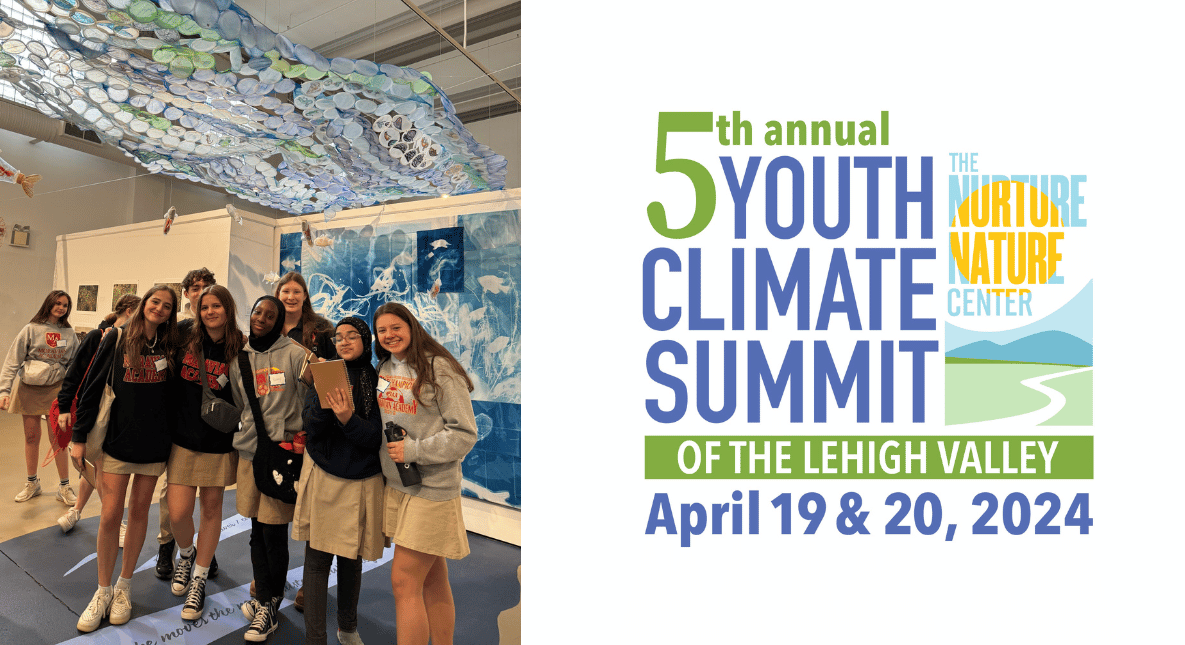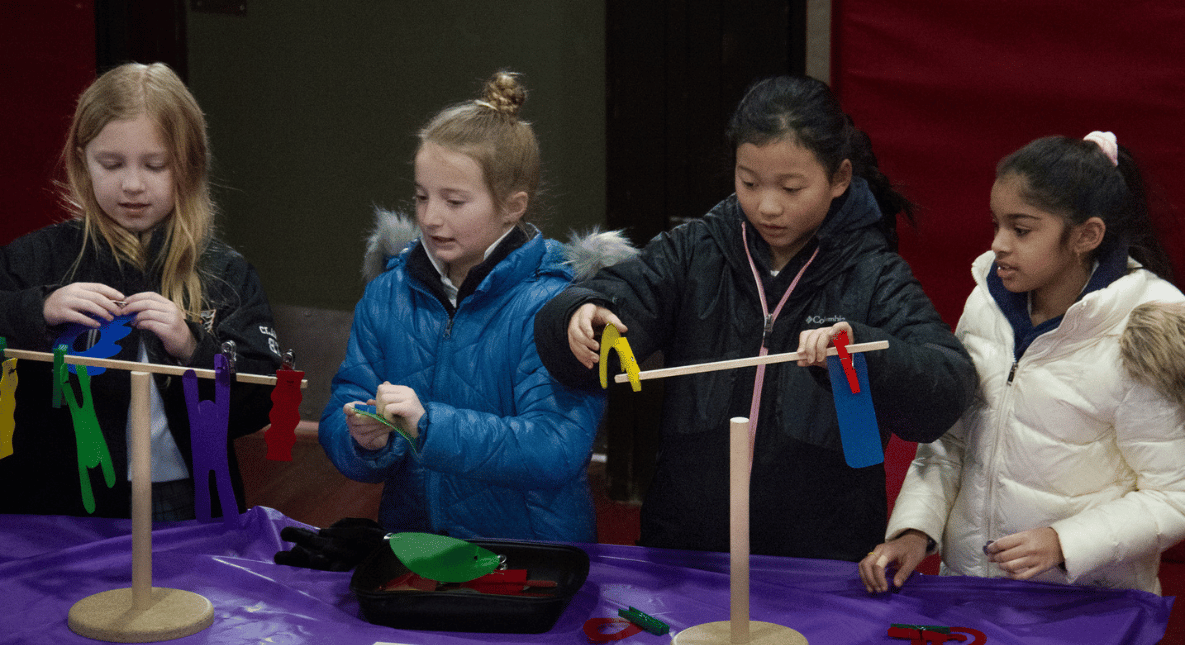Experimenting with Newton’s Law of Motion
Last week in science class, the fifth graders did an interesting experiment on Newton's second law of motion.
This law states that force equals mass times acceleration. Mr. Pomeroy, our science teacher, taught us that the amount of acceleration on an object is proportional to the action force and inversely proportional to its mass. When you multiply the mass of the object by the acceleration, you get the force applied to the object, meaning how far it will go. We decided to test this by using a slingshot. We experimented by firing six different objects each with a different mass. One of those objects was a foam basketball that I hypothesized would go the farthest because it was not too heavy to impact the resulting force of acceleration but was also not so light that it would be blown aside by the force of the wind.
The experiment was done in the main parking lot away from people so no one could get hurt. We set up the slingshot so we could fire our objects that included a beach ball (11 grams), a foam basketball (46 grams), a green water balloon (89 grams), a pink water balloon (114 grams), a green water balloon (381 grams), and an orange water balloon (542 grams). To make sure the acceleration didn’t change, the students in front used wooden poles to keep the angle the same. The student in the back pulling the slingshot placed a marker where they were and had a meter stick to make sure the pouch holding the objects would always stay at the same height. This isolated the variables so when studying the final results we could attribute the results based on the mass of the object.
With all the variables isolated and our setup complete, we began by firing the lightest object. Bharti '30 loaded the beach ball into the cradle and stretched the slingshot to the proper launch position. Counting down from three, everyone excitedly prepared for the launch. And… it only went three feet before the wind caught it and it hit the ground before everyone surged forward trying to retrieve the ball. Next up was the famed foam basketball that I was convinced would fly into God’s Acre. The result was slightly different from my hypothesis, going a mere 30-40 feet.
After the first two disappointing flights, everyone was excited for the next object, the first of four water balloons! Lily '30 and Olivia '30 strained under the force of the giant slingshot as John '30 pulled back on the cradle. The water balloon soared into the air and then landed with a satisfying SPLAT only inches further away from where the basketball touched down. Driven by the prospect of a larger water explosion, we decided to skip the pink water balloon and move on to the bigger and heavier green water balloon. Disappointment and confusion reigned as the water balloon bounced and rolled instead of bursting with a satisfying splash. Its initial impact was not even as far as the basketball. This balloon supported our earlier theory that a heavier object would not go as far. We further proved this with the launch of the orange balloon, the heaviest and largest of all the objects. It also bounced and hit well shy of the basketball. Before packing up and heading back inside, we decided to test the pink water balloon that we had skipped earlier to see how far it would go. This time, Sam '30 and Ella '30 braced against the force of the elastic bands as the pink water balloon was propelled upward. Everyone stood stock still in anticipation as the pink balloon streaked across the sky, nearly hitting the fence to God’s Acre! The pink balloon, with a mass of 114 grams, flew substantially farther than any other object we tested.
This experiment was a great way to wrap up our unit on physics and give us a chance to experience Newton’s law in the real world. Although my hypothesis was wrong, this experience helped me better understand the material we were studying all the while having fun. Thanks to Mr. Pomeroy for making science so engaging and teaching the fifth graders the optimal size to make our water balloons fly the farthest. I know I’ll use this bit of information this summer when playing outside with my friends.
The photos were taken by Elise Eyvazzadeh '30.


 myMA
myMA











